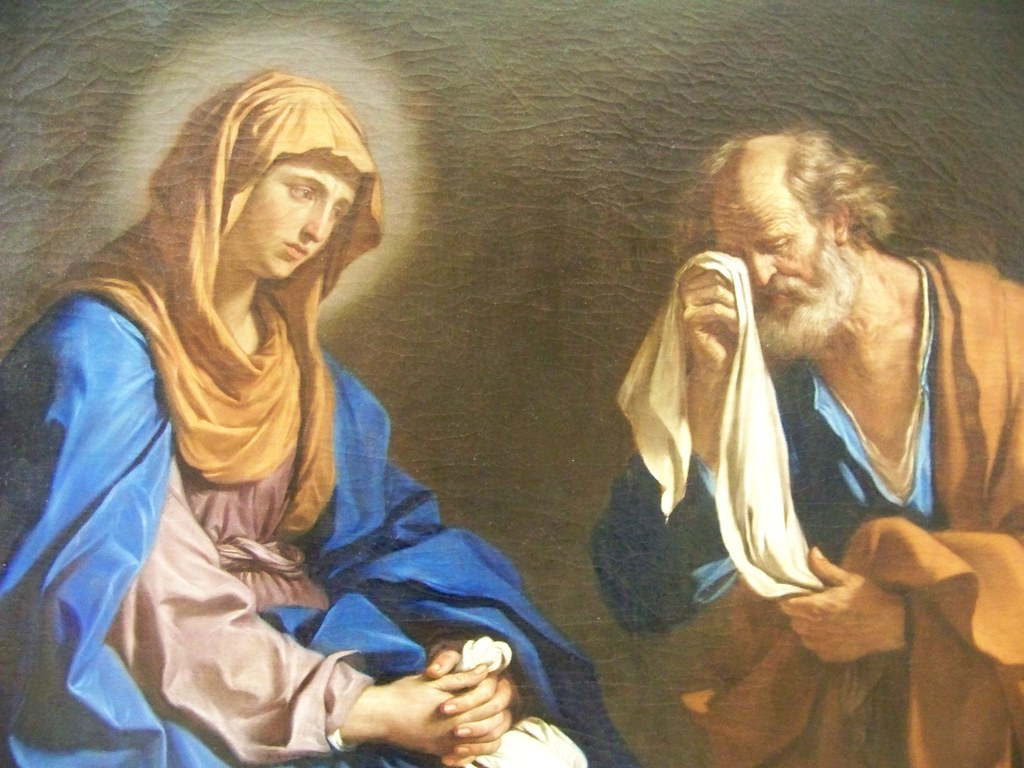FROM PETER TO MARY
When I was a practicing Lutheran I used to tell my Catholic
friends that if it wasn’t for the doctrine of the Church on Mary and the Pope,
I would become Catholic, since it was clear that the Catholic Church was the
original Church. I admired her
organization and the fact that she stood firm in defense of traditional moral
values when many Protestant denominations, including my own, were giving in to
the Zeitgeist on issues like abortion, marriage, and sexuality (Zeitgeist
= “the defining spirit or mood of a particular period of history” as per Bing). The Church’s investment in social justice,
education and works of charity were impressive.
But I couldn’t get past the teaching on Mary and the Pope because I
thought they lacked Biblical foundations.
I discovered my error when I formally studied Scripture and ecclesiastical
history at the Lutheran Theological Seminary at Philadelphia. I already knew that a simple reading of the Gospels
and the Acts of the Apostles reveal Peter as having a privileged place among
the apostles. But that was the man,
Peter. How could his rank among the
apostles have any meaning for the Church today?
Then a professor admitted that it could have great importance. I almost fell off my seat when he told our
class that we needed to take the Roman claim about the papacy seriously – “they
might be right.” He was talking about
the Church’s claim, supported by a list of popes that covers all of her
history, to have always had a successor to Peter. As an historian, he could not simply dismiss the
claim.
And then I looked more closely at some passages in the
Gospels. In particular, where Jesus
says, “You are Peter, and on this rock I will build my Church, and the gates of
Hades shall not prevail against it” (Mat 16:18). Jesus implies a permanent ministry, for you
cannot sustain a church on a dead man.
Also, the Risen Jesus’ commission to Peter: “Feed my sheep” (Jn 21:17). The Gospels do not record much of what Jesus
said to the apostles after his Resurrection.
Why would this charge to Peter have such prominence if it only applied
to his time? In fact, when John wrote
his Gospel Peter was already buried in the Vatican hill in Rome, having been
martyred by Nero.
To go deep into history is to cease to be Protestant, per
Cardinal John Henry Newman. I found this
to be so. I learned that in the first
centuries of Christianity there were many controversies centering around the
most fundamental issues regarding Christ’s true identity. Was he fully human and fully divine? Did he have a human soul? Did he exist before he was conceived in
Mary’s womb? All sides in these debates
based their arguments on Scripture.
Clearly, reliance on the Scriptures themselves could not resolve them. They were resolved by looking at how they
were interpreted in the churches founded by an apostle, and whose chief pastor could
trace his succession back to an apostle.
That is, by investigating both Scripture and Tradition. Tradition is discovered in the liturgies, sermons,
hymns, teachings, and laws of the churches, based on what they received from
their apostolic foundations.
The early Christological controversies were resolved by
bishops gathering in solemn council and rendering decisions, always with the
approval of the Bishop of Rome. Of
course, this is how the New Testament canon was formed. The Council of Hippo in North Africa, in 393,
provided a list of twenty-seven works which the Catholic churches considered
divinely inspired Scripture. This list
excluded some popular Christian writings.
The list of twenty-seven was affirmed by the entire Church.
Trust in the apostolic succession and belief in the divinely
mandated authority of Rome is what saved the faith of the early Church and gave
us the Creed we proclaim every Sunday. As
a Lutheran seminarian, I reflected on what was happening in the Evangelical
Church in America, a newly formed union of three Lutheran confessions. The ELCA was developing its position on
fundamental moral issues by means of a majority vote of delegates gathered in
Chicago. One result was a reversal on
the pro-life position. This affected me
greatly because in a study group of the Didache (“The Teaching of the
Twelve Apostles”), written at the end of the first century and accepted as
normative in the early Church, I asked our moderator if the reference to
abortion in the Didache “Thou shalt not procure abortion” – meant abortion
as we know it today. The answer was “Yes,
they would consider it sin.” I couldn’t
help but wonder how two-thousand years of Christian teaching could be
overturned by a majority vote. This was
proof to me that a living, divinely guaranteed magisterium was absolutely
needed to preserve the purity of the faith in every era. Someone had to have Peter’s authority. The only institution which claimed it was the
Catholic Church.
Once I recognized that Peter’s role was passed on by God to
the presiding Bishop of Rome, I was able to accept the entire dogma of the
Catholic Church. The Magisterium,
consisting of bishops in the apostolic succession, under the rule and
leadership of the Pope, cannot err in its teaching on faith and morality. Without this structure, Christianity is
divided and foreign beliefs creep in.
For this reason, I could trust the Church’s teaching on Mary. I then encountered her as my Mother in
heaven. I went from Peter to Mary!




Comments
Post a Comment